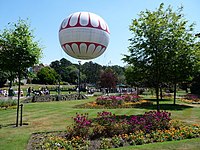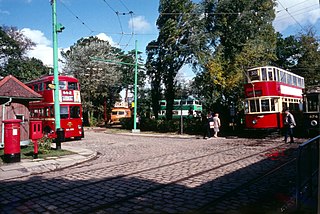
The East Anglia Transport Museum is an open-air transport museum, with numerous historic public transport vehicles. It is located in Carlton Colville a suburb of Lowestoft, Suffolk. It is the only museum in the country where visitors can ride on buses, trams and trolleybuses, as well as a narrow-gauge railway.
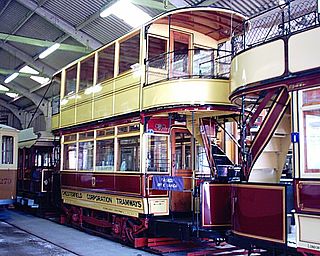
The Chesterfield and District Tramways Company and its successors ran a tramway system in the Derbyshire town of Chesterfield, England. The first horse-drawn line opened in 1882, and in 1897, the system was taken over by Chesterfield Corporation, who extended and electrified it in 1904 and 1905. Additional tramcars were purchased, but two had to be scrapped after a disastrous fire at the depot in 1916. The system suffered from a lack of maintenance as a result of reduced staffing levels during the First World War, and the trams were replaced by trolleybuses in 1927.

Yellow Buses was a bus operator based in Bournemouth, on the south coast of England. Yellow Buses was the trading name for Bournemouth Transport Ltd. The company fell into administration in July 2022 and ceased operations on 4 August 2022.
The Mexborough and Swinton Traction Company was the name adopted by the Mexborough & Swinton Tramways Company in 1929 following the introduction of trolleybuses on all its routes. It operated in the West Riding of Yorkshire, England, over routes serving Manvers Main Colliery, Wath upon Dearne and the towns of Rotherham, Rawmarsh, Swinton, Mexborough, Conisbrough and the estate at Conanby.

Reading Corporation Tramways operated a tramway service in Reading in the English county of Berkshire between 1901 and 1939.
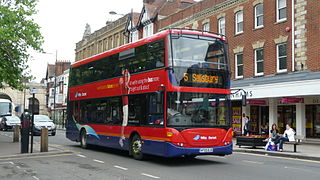
Wilts & Dorset was a bus and coach operator providing services in East Dorset, South Wiltshire and West Hampshire. It was purchased by Go-Ahead Group in 2003 and was rebranded as Morebus in Dorset and Salisbury Reds in Wiltshire in 2012.

Dundee Corporation Tramways formerly served the City of Dundee in Scotland. The corporation had financed the construction of a horse tramway in 1877, but had then leased it to the Dundee and District Tramways Company. They had replaced most of the horse trams with steam tram locomotives pulling trailer cars from 1884, but in 1897 the corporation decided that it would run the tramway system itself. After some negotiation and the payment of compensation, they took over the system in 1899, with a view to electrifying it. Electric trams started running in 1900, and the changeover was completed in 1902.

The Wolverhampton trolleybus system served the city of Wolverhampton, then in Staffordshire, England, for much of the twentieth century.

The Cleethorpes trolleybus system once served the holiday resort of Cleethorpes, in Lincolnshire, England. Opened on 18 July 1937, it replaced part of the Great Grimsby Street Tramways, a tramway that had served both Cleethorpes and the neighbouring seaport of Grimsby. It was closed on 4 June 1960.
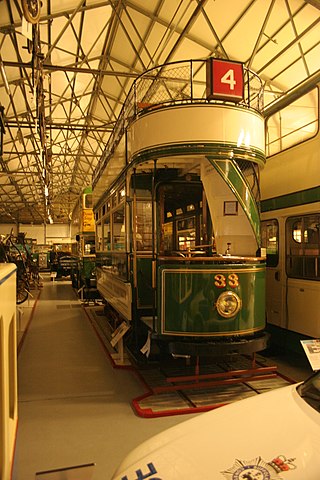
Ipswich Corporation Tramways was an electric tramway system that served the town of Ipswich in Suffolk from 23 November 1903 until 26 July 1926.

Luton Corporation Tramways served the town of Luton in Bedfordshire from 21 February 1908 until 16 April 1932.
Southend-on-Sea Corporation Transport was the overarching name given to the local municipal transport services provided to the town of Southend-on-Sea by the local council. Initially started as a tramway, although known officially as Southend-on-Sea Corporation Light Railway, the trams started operating on 19 July 1901 until the service was terminated on 8 April 1942. A trolleybus system was introduced in 16 October 1925, gradually replacing the tramway, before it closed on 28 October 1954. Motorbuses were first run by the Corporation in 1914, but two years later they withdrew the services. Buses did not return to the Corporation's service until 1932, eventually replacing the trams and trolleybuses. In 1974, the organisation was renamed Southend Transport, and after the Transport Act of 1985, it became involved in a bus war with rival Thamesway. The council sold Southend Transport to British Bus group in June 1993, which in turn was taken over by the Cowie group. Cowie was renamed Arriva in August 1998, with Southend Transport becoming Arriva serving Southend.

Brighton Corporation Tramways operated an electric tramway service in Brighton between 1901 and 1939.
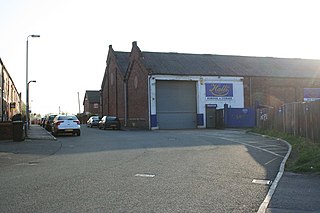
Wigan Corporation Tramways operated a tramway service in Wigan, England, between 1901 and 1931. The first tramway service in the town was run by the Wigan Tramways Company, whose horse trams began carrying passengers in 1880. They began replacing horses with steam tram locomotives from 1882, but the company failed in 1890 when a Receiver was appointed to manage it. The Wigan & District Tramways Company took over the system in 1893 and ran it until 1902. Meanwhile, Wigan Corporation were planning their own tramway system, obtaining an authorising Act of Parliament in 1893, and a second one in 1898. This enabled them to build electric tramways, and in 1902, they took over the lines of the Wigan & District Tramways Company.
At the peak of Britain’s first-generation tramways, it was possible to travel by tram all the way from Pier Head at Liverpool to the Pennines in Rochdale by tram.
The Poole and District Electric Tramways operated an electric tramway service in Poole between 1901 and 1905.
Halifax Corporation Tramways operated a tramway service in Halifax, West Yorkshire, England between 1898 and 1939. After considering lifts and inclined planes to assist trams in negotiating the steep hills to the south of the town, they obtained permission to build a conventional system in 1897, and the first three routes opened in 1898. By 1905 there were 37 miles (60 km) of track and 96 tramcars, supplied by two manufacturers. In 1921, an additional route was added to the system, and the Corporation embarked on a programme of building their own tramcars, some of which replaced existing vehicles, while some extended the fleet. During the 1930s, the trams were gradually replaced by motor buses, either run by the Corporation or by private companies, and the last tram ran on 14 February 1939.
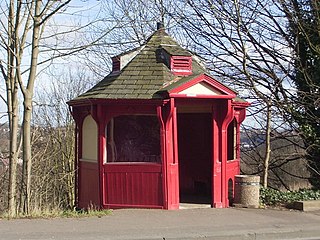
Huddersfield Corporation Tramways operated a tramway service in Huddersfield, England, between 1883 and 1940. It initially used steam locomotives pulling unpowered tramcars, but as the system was expanded, a decision was taken to change to electric traction in 1900, and the first electric trams began operating in February 1901. The system was built to the unusual gauge of 4 ft 7+3⁄4 in, in the hope that coal wagon from neighbouring coal tramways, which used that gauge, could be moved around the system. This did not occur, but two coal trams were used to delivered coal to three mills.
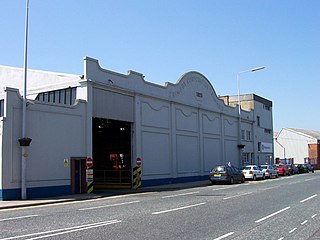
The Great Grimsby Street Tramways Company was a tramway serving Grimsby and Cleethorpes in Lincolnshire, England. It was a subsidiary of The Provincial Tramways Company. They opened a horse tramway in 1881, running from the Wheatsheaf Inn in Bargate to the border with Cleethorpes, with a branch along Freeman Street, and extended the line into Cleethorpes in 1887. It followed the trend of many British systems, and was converted to an electric tramway in December 1901. Small extensions were made to the system at both ends, but the basic plan of the system remained the same throughout its life.
Bradford Corporation Tramways were a tramway network in the city of Bradford, West Riding of Yorkshire, England which operated trams from 1882 until 1950 and trolleybuses from 1911 until 1972. The track gauge of the tramways was 4 ft.

Stockport Corporation Tramways operated a tramway service in Stockport, England, between 1901 and 1951. It was preceded by a horse tramway from Levenshulme to Stockport, which opened in 1880, and was ultimately run by the Manchester Carriage and Tramways Company. A second independent horse tramway opened in 1890, running to Hazel Grove. In 1899 the Corporation bought the first line, electrified it, and leased it back to the operating company. Their powers to buy the Stockport and Hazel Grove Tramway, authorised by the same Act of Parliament, were not exercised until 1905.

















